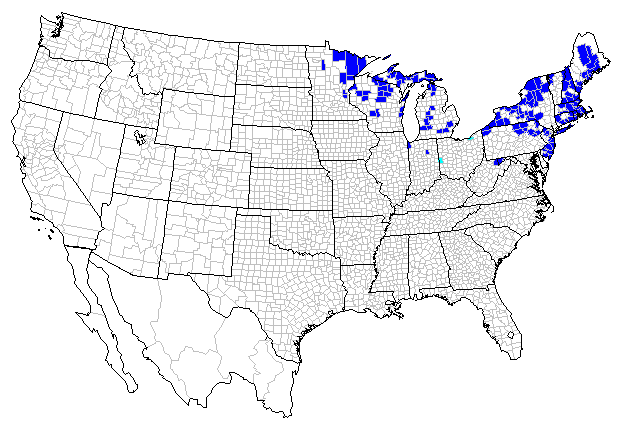 |
 

 |



Bog Copper (Lycaena epixanthe [Boisduval & LeConte])
Wing span: 7/8 - 1 inch (2.2 - 2.5 cm).
Identification: Upperside of male brownish with purple iridescence; female dull gray-brown. Underside of both sexes white or pale tan; hindwing with very small black spots and red zigzag border on outer margin.
Life history: Males perch on low plants to watch for females. Eggs are laid singly at base of host plant; caterpillars feed on shoots and leaves. First-stage caterpillars overwinter in their eggs, often underwater.
Flight: One flight from June-September.
Caterpillar hosts: Shrubby cranberries in the heath family (Ericaceae).
Adult food: Water from raindrops and nectar from cranberry flowers.
Habitat: Acid bogs with cranberries and other Ericaceae.
Range: Maine south to New Jersey and West Virginia; west through northern Great Lake states and Ontario.
Conservation: Habitat is sensitive and subject to draining or conversion to commercial use.
The Nature Conservancy Global Rank: G4 - Apparently secure globally, though it might be quite rare in parts of its range, especially at the periphery.
Management needs: Conserve habitats of known populations.
References:
Opler, P. A. and V. Malikul. 1992. A field guide to eastern butterflies. Peterson
field guide #4. Houghton-Mifflin Co., Boston. 396 pages, 48 color plates.
Scott, J. A. 1986. The butterflies of North America. Stanford University Press,
Stanford, Calif. 583 pages, 64 color plates.
Author: Jane M. Struttmann

